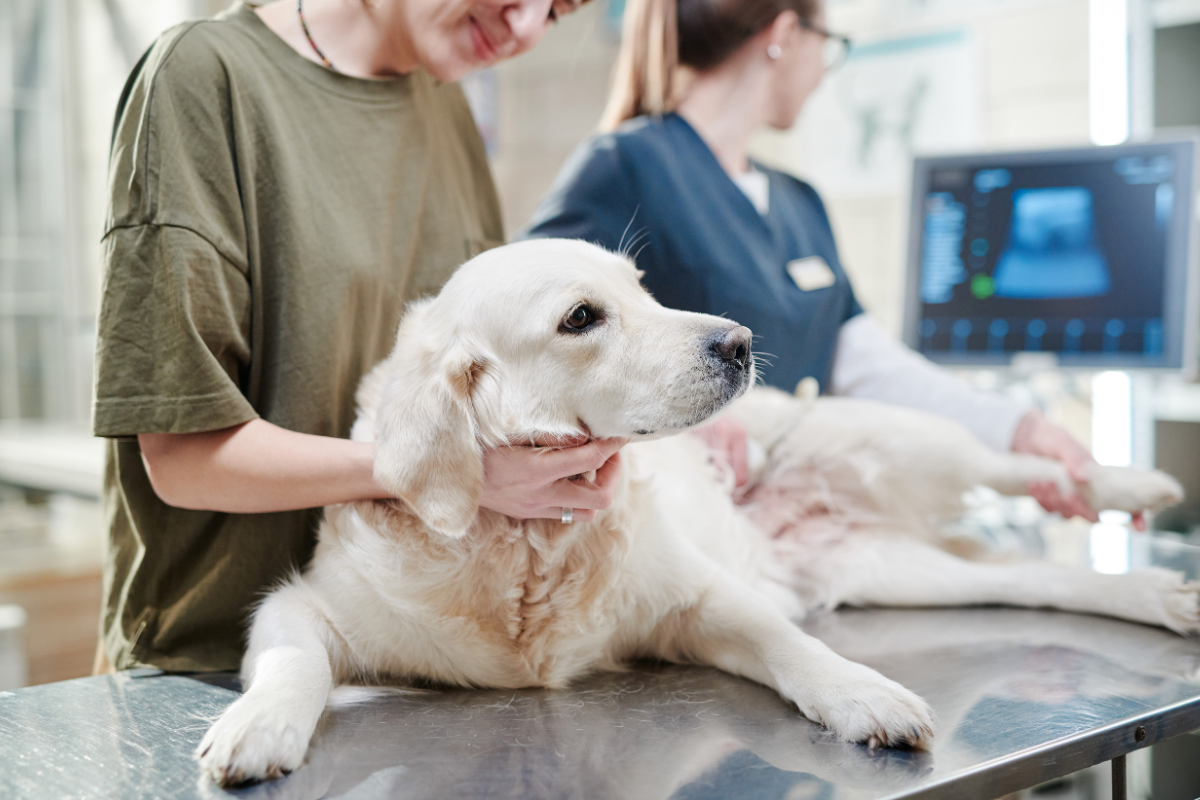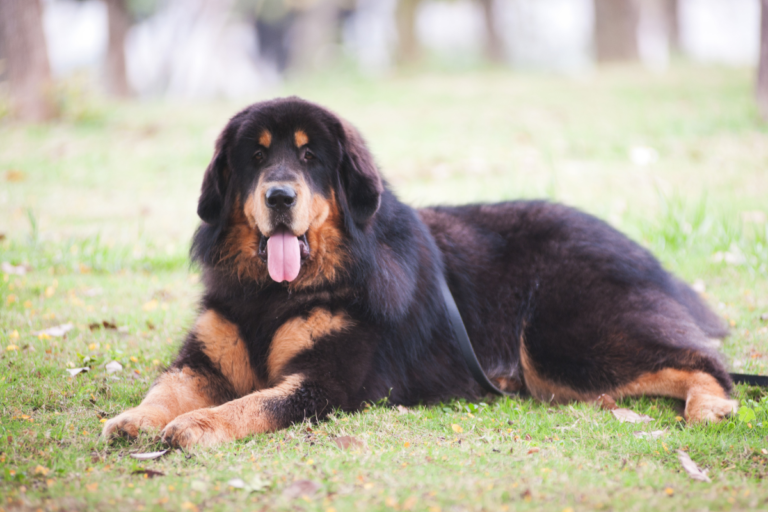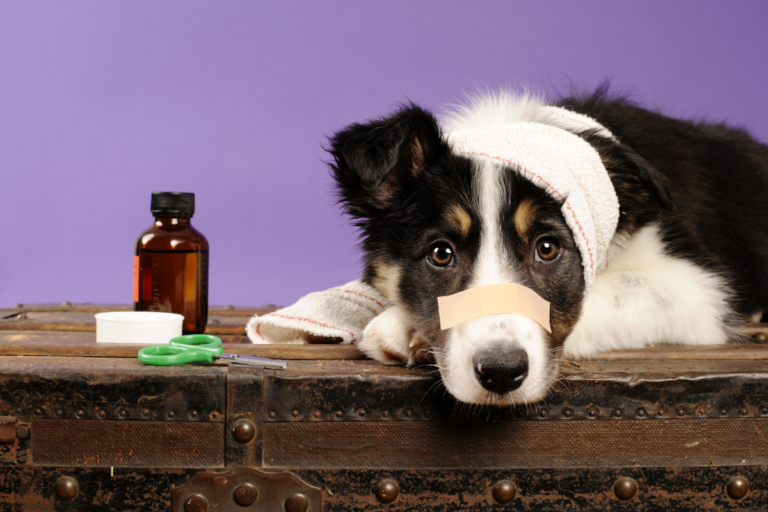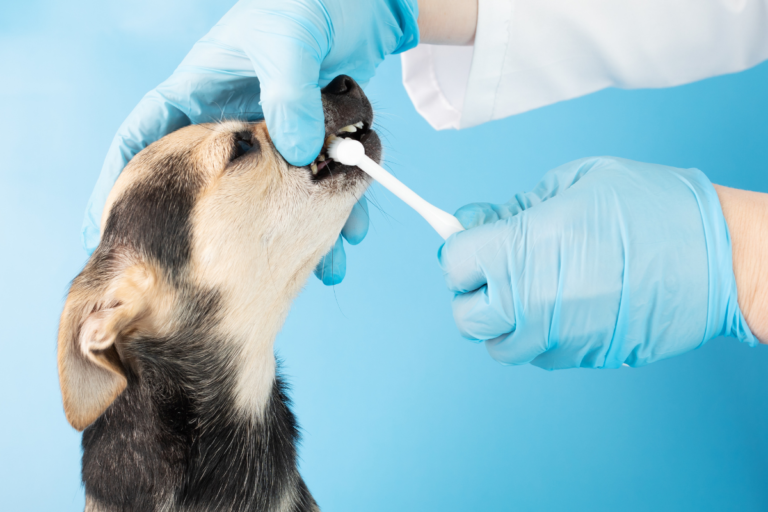Unleashing the Secrets: Recognizing Canine Kidney Disease Symptoms
Understanding Kidney Disease in Dogs
Getting a grip on kidney disease symptoms in dogs is vital because we all want our furry pals to be as fit as a fiddle, right? Catching the early signs can make a world of difference, so let’s do our best Sherlock impression and sniff out those clues.
Early Symptoms and Detection
Spotting the early hints of kidney disease can give your dog a fighting chance. Keep an eye out for things like a sudden love affair with the water bowl or extra potty breaks. Maybe their dinner isn’t disappearing as fast, or they’re slimming down without hitting the gym. According to VCA Hospitals, guzzling water and extra peeing are some of the first signs that your dog’s kidneys are not clocking in their full hours. Here’s a quick list of symptoms you might see:
- Drinking like there’s no tomorrow
- More bathroom trips
- Skipping meals
- Unwanted pounds shedding
- Feeling zonked
- Throwing up
- The runs
- Funky breath
These signs might not roll out the welcome mat until a chunk of the kidney tissue is on a permanent vacation, making early detection a game-changer. Swing by our dog illnesses section for the scoop on early signs.
Common Causes and Risk Factors
What gives with kidney disease popping up in our canine pals? It often ties back to age, breed, and their general health vibe. Chronic kidney disease (CKD) tends to hang with the senior crowd since once the kidney decides to peace out, it’s not coming back. According to American Kennel Club (AKC), tiny fluffs might dodge the first signs until their tenth birthday, but the big fellas could start feeling it around their seventh cake.
Here’s what could be setting the stage:
- Aging like a fine cheese
- Family tree issues
- Lingering bacterial bugs
- Toxins gatecrashing the party
- Nasty teeth vibes (periodontal disease in dogs)
- Slacking on the water intake
- Certain pills
- Other sneaky health troubles like diabetes
Here’s a handy table breaking it all down:
| Cause | Risk Factor | Impact |
|---|---|---|
| Aging | Older dogs | No going back |
| Genetics | Breed quirks | Varies by doggy DNA |
| Infections | Persistent bugs | Kidney harm alert |
| Toxins | Nasty stuff exposure | Likely kidney failure |
| Dental disease | Yucky gums | Germ spread |
| Dehydration | Water neglect | Kidney struggles |
| Medications | Some meds | Vet’s watchful eye required |
| Health issues | Diabetes, etc. | Ramps up the risk |
Being clued in to the early signs and usual suspects helps keep kidney disease away from our four-legged family members. Regular vet visits, keeping those chompers in check, and noticing when something’s off can make a real difference.
For more wisdom on keeping your dog’s health in tip-top shape, swing by our reads on dog diseases and symptoms, the must-knows of canine dental care, and tips to dodge chronic kidney disease.
Preventing Canine Kidney Disease
Keeping our four-legged buddies safe from kidney troubles is super important for their health and happiness. Here, we chat about two major things: the power of what they eat and drink, and keeping their teeth clean while dodging harmful stuff.
Importance of Diet and Hydration
Feeding our pups the right food can really help keep kidney problems at bay. It might be a good idea to ditch the dry kibble and serve up whole foods instead. Whole foods are loaded with nutrients and aren’t as processed, which makes them easier on pooch kidneys.
Making sure our dogs have plenty of water is just as crucial. A well-hydrated dog means happy kidneys that can do their job without breaking a sweat. Dehydration can overwork the kidneys and lead to trouble down the road. Regular vet visits can keep an eye on this and more.
Those special kidney diets are a lifesaver for pups already at risk. They keep phosphorus to a minimum, which lets those kidneys chill out a bit (Michigan State University College of Veterinary Medicine).
| Diet Bit | Why It’s Good |
|---|---|
| Whole Foods | Gentle on the kidneys, natural goodness |
| Special Diet | Limits phosphorus, lessens kidney workload |
| Loads of Water | Stops dehydration, keeps kidneys working smoothly |
Dental Hygiene and Toxin Avoidance
Keeping our dog’s teeth in tip-top shape is mega important for warding off kidney issues. Nasty plaque and tartar can lead to gum disease, which messes with their kidneys (WebMD). A good brushing routine and regular dental visits do wonders.
Steer clear of toxic household stuff that could harm our pooches. Things like meds and certain foods on our table can be dangerous for them. Keeping these away can ease the burden on their kidneys (WebMD).
Surprisingly, acupuncture might help too by boosting blood flow, giving those kidneys a little love (Dr. Harvey’s).
Take a peek at our article on dog teeth for more on keeping their chompers healthy.
| Preventive Measure | Good Vibes |
|---|---|
| Tooth Care | Cuts risk of gum disease and kidney woes |
| Toxin-Free Zone | Stops accidental munching, helps the kidneys |
| Vet Visits | Keeps track of kidney health and more |
Taking the time to focus on what our dogs eat, drink, keeping their teeth in shape, and avoiding nasty substances goes a long way in keeping kidney disease at bay. Those vet check-ups and staying clued-up on their needs make sure our pups are living their best life.
Diagnosing Kidney Disease in Dogs
Spotting kidney trouble in our furry pals early on makes a big difference. Let’s talk about the signs to keep an eye out for, the tests that help us figure it out, and the fancy stuff like biomarkers, including SDMA, which sounds high-tech because it is.
Clinical Signs and Diagnostic Tests
To figure out if our dogs might have kidney issues, we gotta watch for clues and sometimes run a few tests. Some red flags are when your dog drinks water like it’s going out of style or starts acting like a couch potato instead of the bouncy furball we know. Noticed a change in their eating habits or some unexpected barfing? Hit up your vet, pronto.
Diagnostic Tests go hand in hand with the due diligence:
- Urinalysis: This checks out your dog’s pee for stuff that’s off. When kidneys are off their game, they don’t concentrate the urine as they should.
- Blood Chemistry Analysis: Here’s where they check for things like BUN and creatinine. If these numbers are high, it’s a sign the kidneys are dragging their feet a bit.
| Test Type | What It Does |
|---|---|
| Urinalysis | Takes a look at kidney performance |
| Blood Chemistry Analysis | Checks out BUN and creatinine numbers |
Utilizing Biomarkers like SDMA
Biomarkers? Oh, fancy! They’re like the early warning system for our pups’ kidneys. SDMA is one cool cat in this category.
SDMA acts as an early bird, spotting kidney hiccups before another standbys like serum creatinine get their act together. It’s super helpful to nip issues in the bud (VCA Hospitals).
Pros of SDMA:
- Early Bird Advantage: SDMA lifts its hand before BUN and creatinine, saying, “Hey, there’s a problem!” (VCA Hospitals).
- Reliable Tracking: It’s perfect for keeping an eye on kidney status, especially when paired with other checks.
| Biomarker | Why We Use It |
|---|---|
| SDMA | Great for early spotting kidney trouble |
| BUN | Sees waste product hangin’ around |
| Creatinine | Checks kidney health |
We’ve got more scoop on other conditions too—like what’s going on with dog heart issues, gum disease in dogs, and what to do if your female dog gets a bladder infection.
With a solid understanding of these tests and tell-tale signs, we’re better equipped to be all hands on deck for our pooches, making sure they lead the happiest, tail-wagging life possible.
Managing Canine Kidney Disease
Treatment Options and Therapies
Dealing with kidney issues in dogs can be like piloting through a maze of treatments and therapies. Our mission is simple: give our four-legged pal the best life possible while pressing pause on the disease’s march.
Special Chow Time
Diet plays a superhero role here. Specialized chow for pups with dodgy kidneys can keep those organs from working overtime. We’re talking meals that ease up on phosphorus, phosphate, and acids, and in the later stages, even pull back on protein. It’s like a spa day for their belly (Michigan State University College of Veterinary Medicine).
Medications
Pills and potions can be game-changers in keeping those pesky symptoms in check. Here’s what’s often tossed in the mix:
- Phosphate Binders: Kick out extra phosphorus.
- Fluid Therapy: A hydration boost.
- Supplements: Top up vitamins lost to the disease.
For the nitty-gritty on treatments, check out dog diseases and symptoms.
Home Fluid Therapy
Subcutaneous fluids are your stay-at-home hero for keeping hydration on point. With a bit of guidance from the vet, it’s a cinch to add this to your pup’s routine.
| Treatment | Purpose | Notes |
|---|---|---|
| Special Chow Time | Cut kidney slack | Prescription may be required |
| Medications | Symptom management | Includes phosphate fighters, fluids, and vitamin boosts |
| Home Fluid Therapy | Keep the water flowing steady | Easy to learn and use at home |
All About That Diet and Meds
Feed ’em right and medicate smart—those are the twin pillars of fighting canine kidney disease. When we tweak their diet and meds, it’s like turning back the clock on the disease and amping up their overall zest for life.
Diet
For dogs dealing with kidney issues, the food bowl is ground zero. Low down on protein and phosphorus, and specifically tuned for kidney health.
| Nutrient | Purpose | Importance |
|---|---|---|
| Protein | Eased to lighten kidney load | High protein overloads the system |
| Phosphorus | Held back to avoid chaos | Too much can damage kidneys further |
| Sodium | Controlled to dodge pressure | Helps juggle blood pressure and water levels |
Medications
Medications take on the symptoms and side hustles of kidney disease. Phosphate binders step in when phosphorus gets too handsy; there’s also help for parathyroid control, calcium balancing, and blood cell production (VCA Hospitals).
For those of us playing doctor at home, remember to keep the vet in the loop. Our furry pals need a game plan as unique as their paw print. For more on keeping them healthy, swing by dog diseases and dog heart disease.
Chronic Kidney Disease Progression
Stages of CKD in Dogs
So, your dog’s kidneys aren’t working quite like they used to, huh? Chronic Kidney Disease (CKD) in dogs is a bit of a sneaky ailment, creeping in slowly. Recognizing these stages can be the difference in making sure our pups get the TLC they need.
Stage 1: Nothing much to see here, folks—on the outside, at least. While kidney function is slipping, there are no glaring signs waving at you. That’s why regular vet check-ups are our best pals. Catching it early with tests for things like SDMA keeps us in the game.
Stage 2: Ever notice your dog drinking more water or asking for too many bathroom breaks? That could be your first sign (VCA Hospitals). Blood tests might hint at problems too. Early tweaks to what they eat and how they live can make all the difference.
Stage 3: Ah, now we’re getting to the not-so-fun stuff—loss of appetite, some vomiting, diarrhea, and just feeling blah in general. This is when you really need to step in with some medical help and regular check-ups to slow down CKD.
Stage 4: This is the big one, where symptoms can’t be ignored. Our furry buddies are really feeling it. They’ll need serious veterinary care, and maybe even a hospital visit for treatments.
| CKD Stage | Symptoms | Key Actions |
|---|---|---|
| Stage 1 | No visible symptoms | Early detection via biomarkers |
| Stage 2 | Increased water intake and urination | Dietary changes, early treatment |
| Stage 3 | Loss of appetite, weight loss, vomiting | Medical treatments, frequent monitoring |
| Stage 4 | Severe symptoms, poor quality of life | Veterinary care, possible hospitalization |
Monitoring and Long-Term Care
Let’s face it—managing CKD in dogs is a marathon, not a sprint. It’s about keeping an eye on things and making sure they’re living their best lives. Keeping up with those vet visits for blood and urine tests will help us see how things are going. Enter biomarkers like SDMA to catch CKD when it’s still shaking in its boots.
Here’s what to focus on:
- Diet: Talk about what’s on the menu! Kidney-friendly diets that cut back on phosphorus and protein while bragging about their omega-3 fatty acids can work wonders for CKD symptoms. Food is a big deal in keeping kidneys in line and your bud’s general happiness.
- Hydration: Let’s keep that thirst monster at bay! Making sure your dog drinks enough is key, and sometimes those extra fluids under the skin can help keep everything in order.
- Medications: Depending on what’s happening with your pal, they might get meds to control blood pressure, stop protein sneaking into urine, and manage anemia. If they’re feeling queasy or not eating, a little pharma magic might be on the cards too.
Simple life changes, like cutting back on wild dog park romps and fluffy beds, matter a lot. We want our dogs active but chill, doing things that don’t wear them out. Dialysis might even pop up as an option when kidneys can’t pull their weight anymore (WebMD).
For more gritty details on CKD care and giving your dog a good life, check out our articles on dog diseases, overweight dog, and mental health dog. We’re all in this together, making sure our pups are the top dogs they deserve to be.
Special Considerations for Kidney Disease
Tending to a pup with chronic kidney disease (CKD) can be quite the undertaking, but trust us, a little know-how goes a long way. From a lifestyle shake-up to potentially life-saving treatments like dialysis, we’re diving into how to ensure your furry friend keeps wagging their tail.
Lifestyle Adjustments and Quality of Life
Our four-legged friends with kidney problems need a few tweaks to live their best lives. Managing CKD is a blend of whipping their diet into shape, keeping ’em hydrated, and making sure ‘Doc’ keeps a close eye on them.
Diet and Hydration
A chow plan designed for CKD can turn things around for many dogs. These special diets dial down phosphorus, acid load, and ease up on protein as the disease gets worse. Staying hydrated isn’t just a summer chore—it’s vital for helping kidneys do their thing.
Monitoring and Regular Check-Ups
Seeing the vet regularly is a must to keep tabs on how the disease is going and to tweak treatments as needed. Fun fact: pets can soldier on for ages with even a sliver of their kidney still clocking in.
| Factors to Monitor | Importance |
|---|---|
| Blood Pressure | Keeps an eye on sneaky hypertension, a CKD companion |
| Urinalysis | A quick peek at kidney performance |
| Blood Chemical Profile | Checks out key players like creatinine and BUN |
Physical Symptoms and Managing Discomfort
Keep your eyes peeled for big thirst and urination, looking bedraggled, barfing, the runs, not eating, weight dropping and dry tissues. Yeah, we’re not sugarcoating it, but the right meds and lifestyle hacks can really help your buddy feel better.
For a deep dive into CKD symptoms and survival tips, drop by our article on canine kidney disease symptoms.
Kidney Dialysis as a Treatment Option
When things get seriously grim with CKD, kidney dialysis might be the superhero move your doggo needs. It’s not the go-to for everyone, but when needed, it picks up where your dog’s kidneys left off.
Understanding Kidney Dialysis
Dialysis steps in to tackle the waste disposal and extra fluid management for kidneys that aren’t cutting it. This can be the key for dogs with close to zero kidney function.
When to Consider Dialysis
If medical treatments just aren’t cutting it and your pup’s symptoms are out of control—constant hurling and hunger strikes, we’re looking at you—dialysis might be your next best bet.
Chat with your vet about whether this route makes sense, weighing the good outcomes and costs that come with it.
For more must-know tips on keeping your pup in top shape and learning about other health issues, scroll through our take on dog teeth, dog diabetes symptoms, and dog heart failure.






